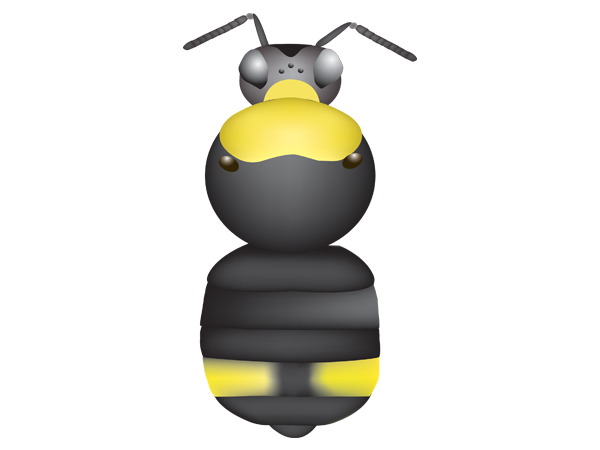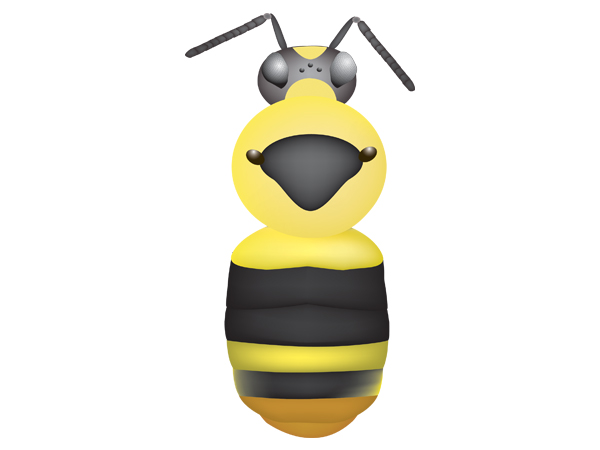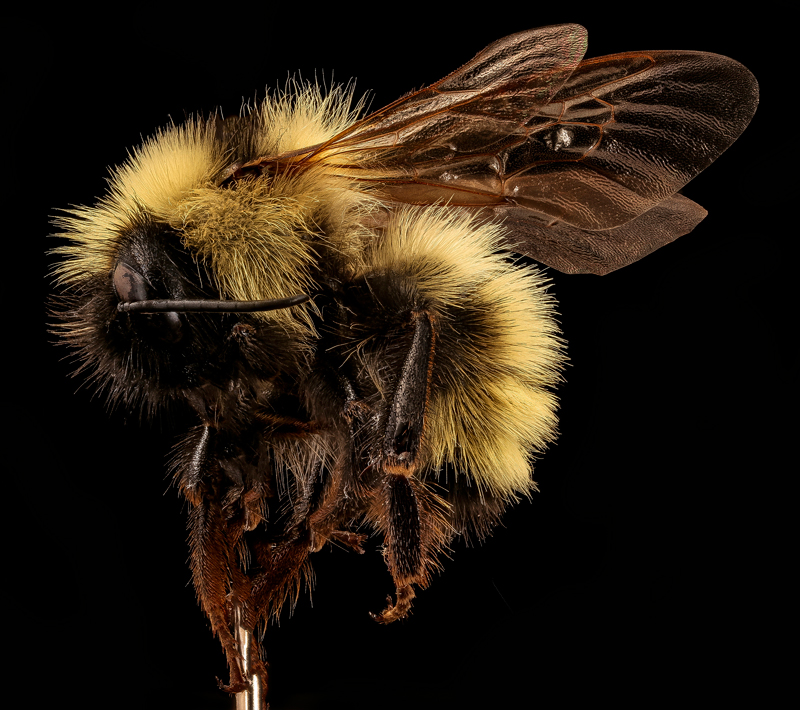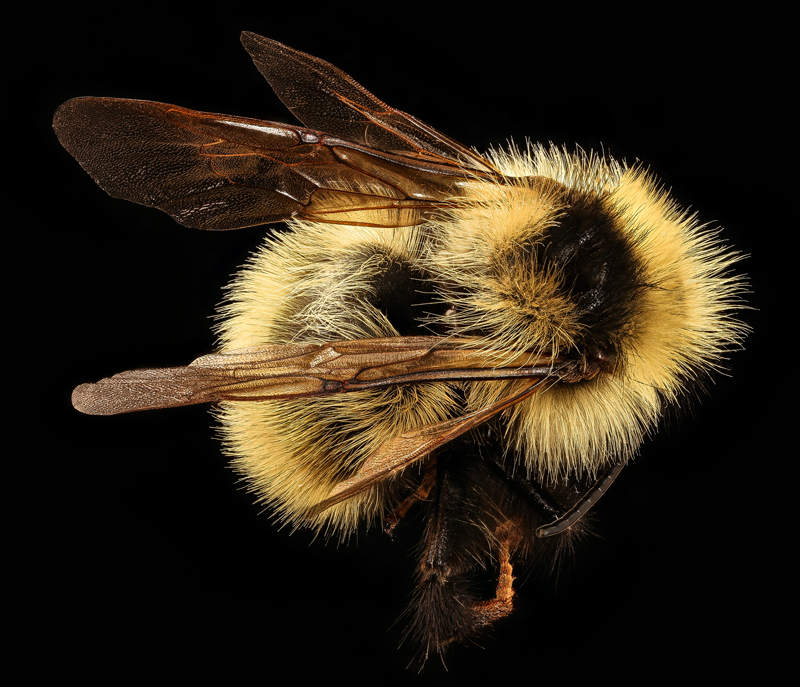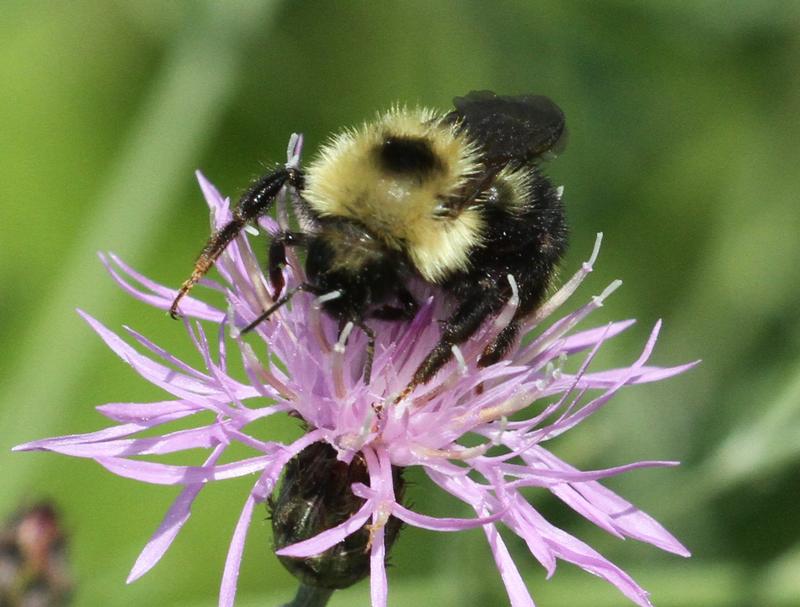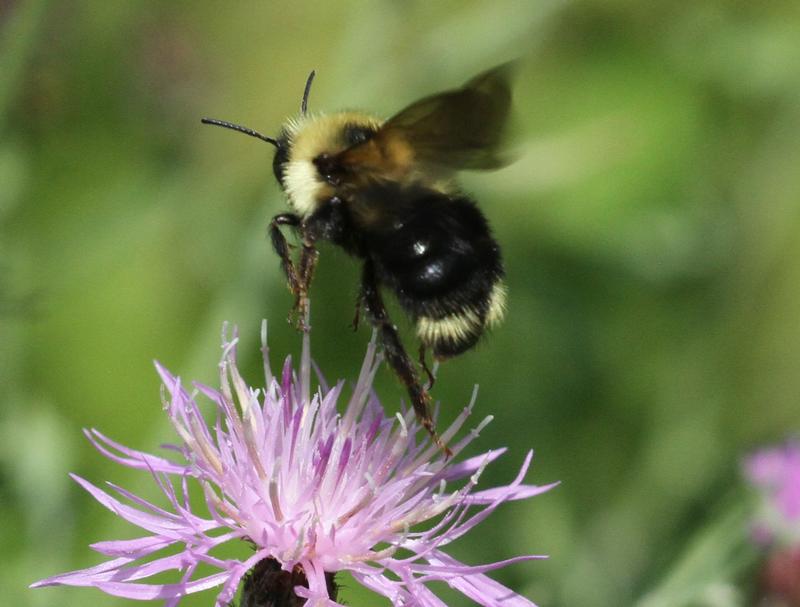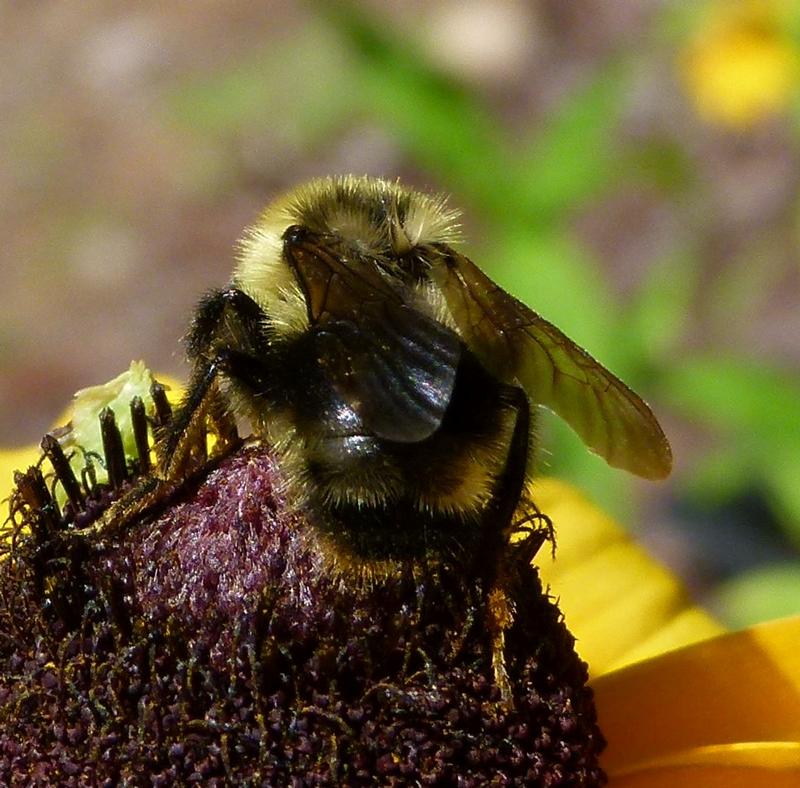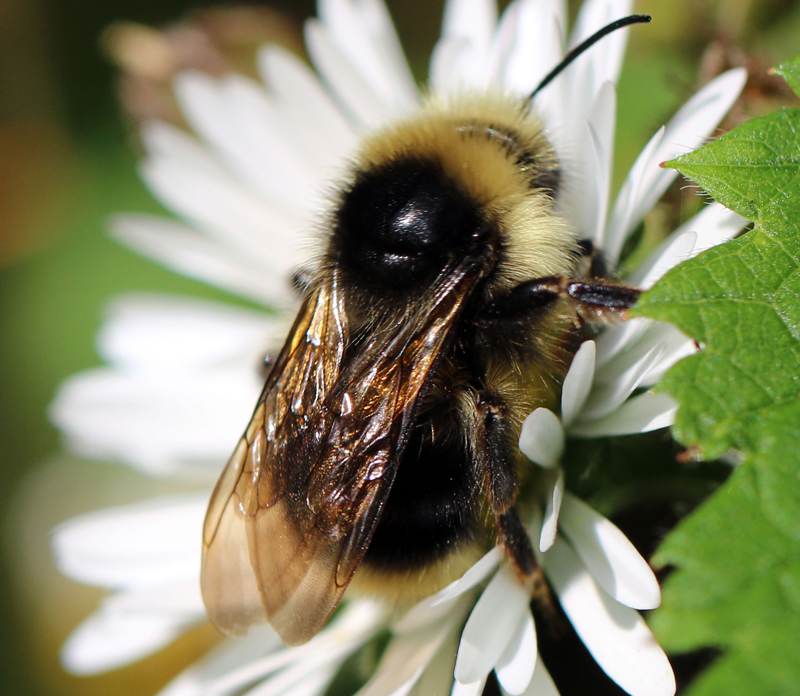
Status-Global/State:
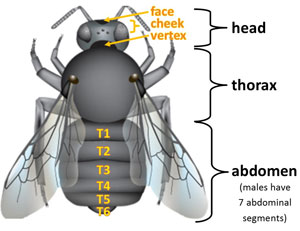
Identification:
- Female – Female Face black and vertex yellow. Thorax mostly yellow with black spot or occasionally a black band. Abdominal segments T2 black, T4 yellow/cream, T5-T6 black. Morphs vary with coloration on T1 and T3 and may have black in the center of T4. T6 shiny and curved-under.
- Male – Head and thorax are similar to female except with a black band between wingpads that extends toward the abdomen in a "V" shape. Abdomen color pattern is highly varied. T1 is often yellow and T2-3 are black or intermixed, T4 is yellow, T5 is black, and T6-T7 is orange or intermixed with black.
- Other distinguishing features – Small bee with long/medium and uneven hair.
Similar Wisconsin Species:
A similar bumble bee species in Wisconsin is the indiscriminate cuckoo (B. insularis) (Colla et al. 2011, Williams et al. 2014).
Description of Habitat/Range:
In North America, this species occurs in a variety of habitats, typically in the boreal forests and temperate forests at higher elevations (Williams et al. 2014).
Nectar Plants
Food plants include Cirsium (thistles), Heliomeris, Melilotus (sweet clovers), Potentilla (typical cinquefoils), Rubus (blackberry), Senecio, Solidago (goldenrods), and Trifolium (clovers) (Williams et al. 2014, Colla et al. 2011).
Data from verified B3 observations [updated 2/28/2024].
Flight Season:
All of Wisconsin's observation records took place in June-August. Rangewide queens emerge in May and enter diapause in September (Colla et al . 2011).
Literature Cited:
Colla, S., Richardson, L. and Williams, P. (2011) Bumble Bees of the Eastern United States. A product of the USDA Forest Service and the Pollinator Partnership with funding from the National Fish and Wildlife Foundation.
Hatfield, R., Jepsen, S., Thorp, R., Richardson, L. & Colla, S. 2016. Bombus flavidus. The IUCN Red List of Threatened Species 2016: e.T13340361A46440156.
Williams, P.H., Thorp, R.W., Richardson, L.L. and Colla, S.R. (2014) The Bumble bees of North America: An Identification guide. Princeton University Press, Princeton.
